 Connections¶
Connections¶
Here the Input/Output ports of the control station can be configured. Depending on the configurable port selected the user will need to provide different parameters.
Each connection is associated with a specific pin number. For more details see the Pinout section of the BCS hardware manual.
Arbiter¶
Pins 45 and 46 are dedicated pins to allow the UART communication with the Safety micro Controller (SuC). This microcrollers is in charge of monitoring the state of the main microcontroller and providing the Flight Termination Signals (FTS).
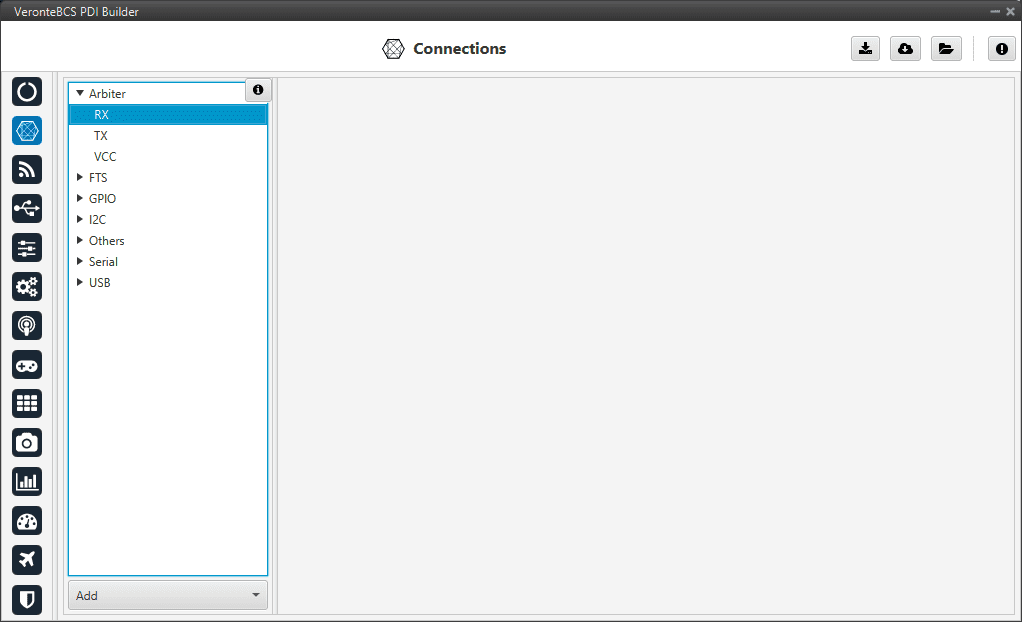
Arbiter menu¶
FTS¶
The FTS (Flight Termination System) is a signal that is activated when a sytem error occurs (System Error bit is False).
There’s a group of bits that when failed cause the system error, to see more about the condition that make the system error happen, go to Activation system error bits section of the 1x Software Manual.
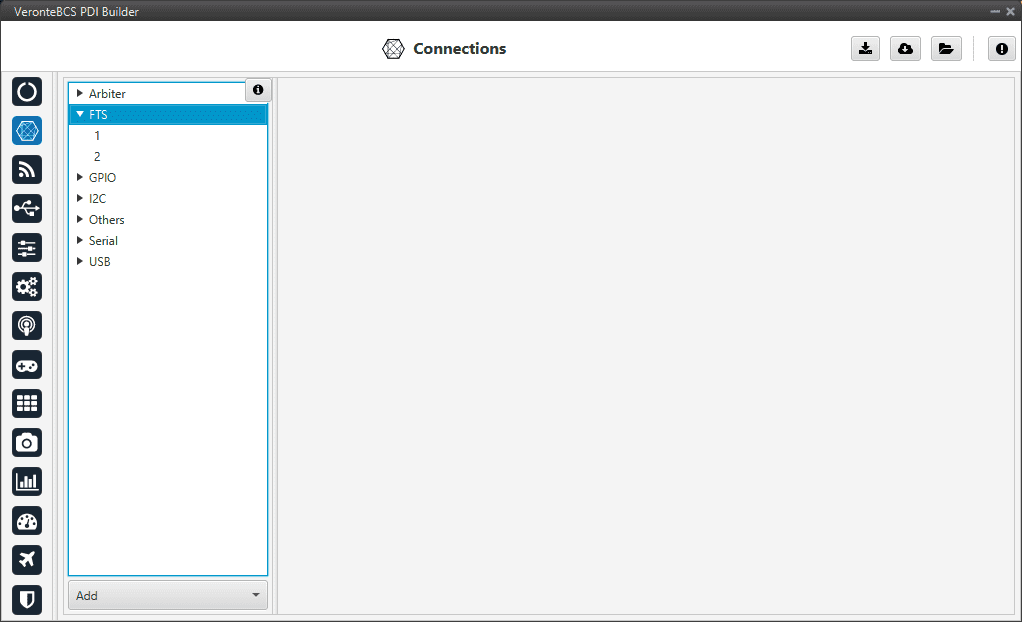
FTS menu¶
GPIO¶
Output pins produce PWM or GPIO signals that are used to move different servos and actuators of the platform.
A GPIO (General Purpose Input/Output) is a generic pin that can be configured as an input or output pin. When this option is configured as an output pin, the value sent will be different from the one sent if it was a PWM.
GPIO pins admit up to 4 different states:
ON: A continuous signal of value 1, made by 3.3V.
OFF: A continuous signal of value 0, made by Ground.
PULSE ON: A single pulse of value 1, with a width specified in seconds.
PULSE OFF: A single pulse of value 0, with a width specified in seconds.
The configuration of the pin output value is done with an Output action in the Automations menu.

GPIO window¶
BCS admits up to 20 I/O PWM/GPIO signals. To configure a pin as GPIO after it has been changed to PWM, click Add and select GPIO:
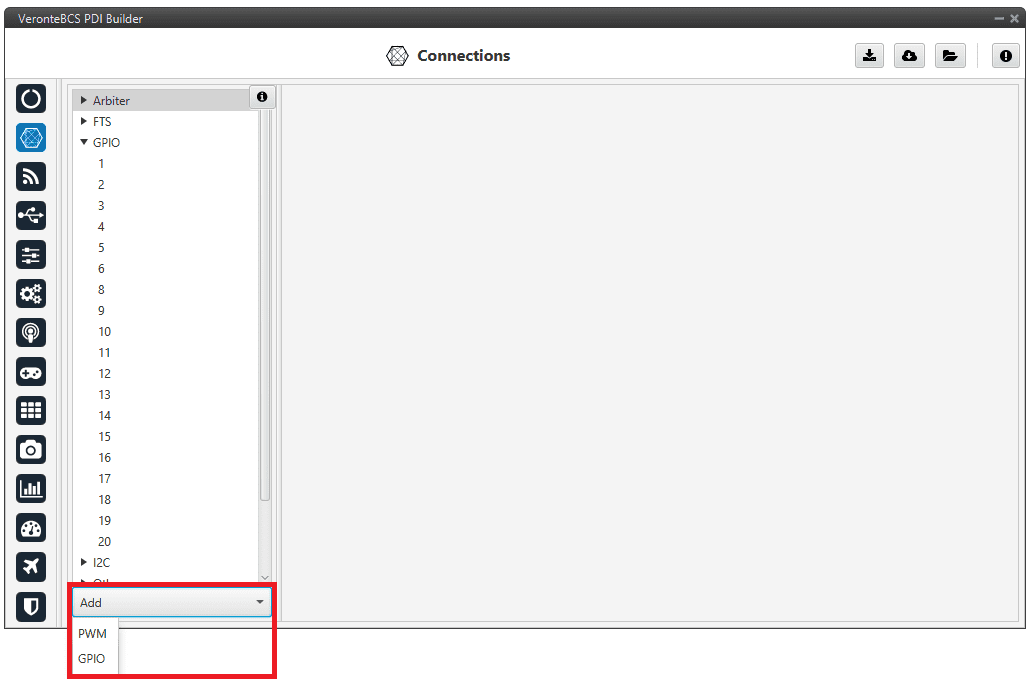
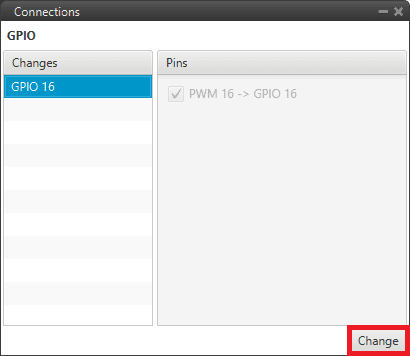
Add GPIO¶
I2C¶
I2C stands for Inter-Integrated Circuit bus. It is a bus interface connection protocol incorporated into devices for serial communication. It operates in 2 modes: master and slave.
I2C uses only 2 bi-directional open-drain lines for data communication called SDA and SCL. Both these lines are pulled high.
Pin 31 - SCL: Clock line for I2C bus (0.3V to 3.3V), it carries the clock signal.
Pin 32 - SDA: Data line for I2C bus (0.3V to 3.3V), transfer of data takes place through this pin.
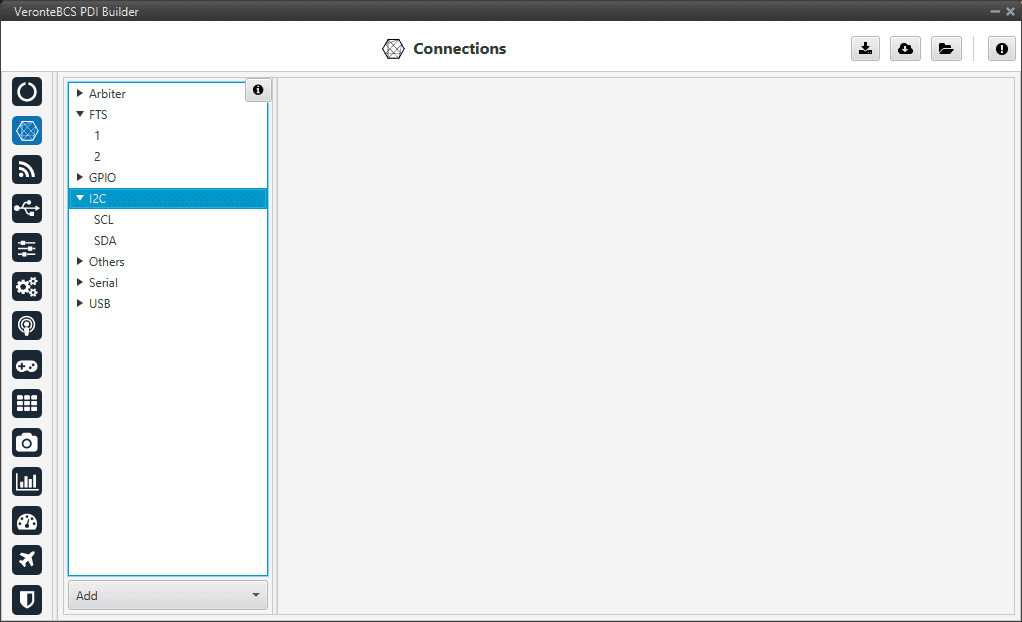
I2C menu¶
Others¶
Deprecated
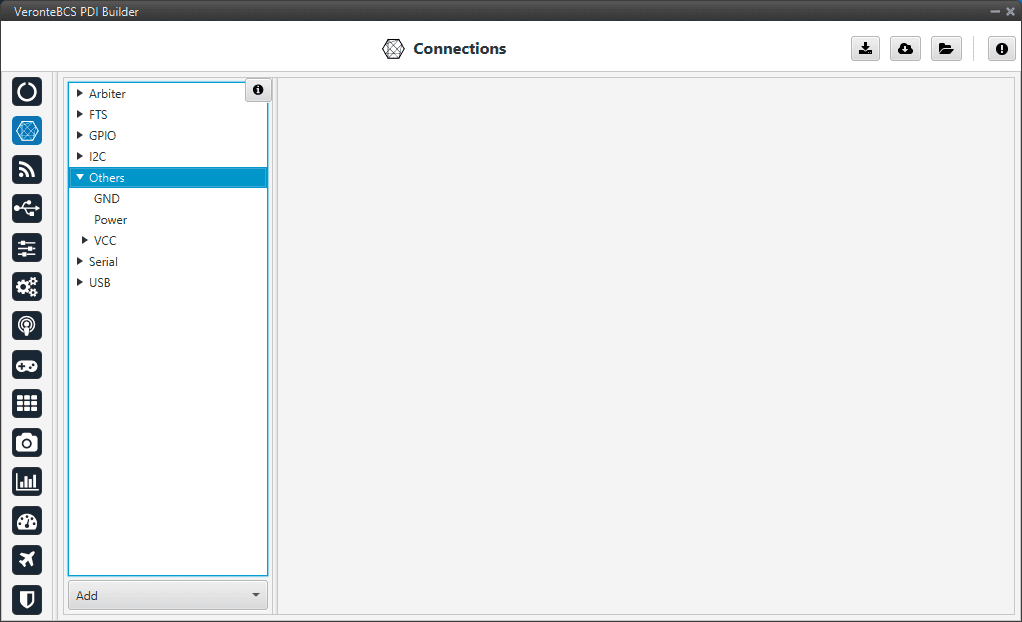
Others menu¶
PWM¶
Output pins produce PWM or GPIO signals that are used to move the different servos and actuators of the platform.
The acronym PWM corresponds to Pulse Width Modulation. BCS sends a pulse with a certain width that is received by the servo/actuator, and according to the width of such pulse, it changes its behaviour. A wide pulse will correspond to a big movement and a narrow one to a small movement.
By default, all PWM/GPIO pins are configured as GPIO output. So, to configure them as PWM, it is necessary to click Add:
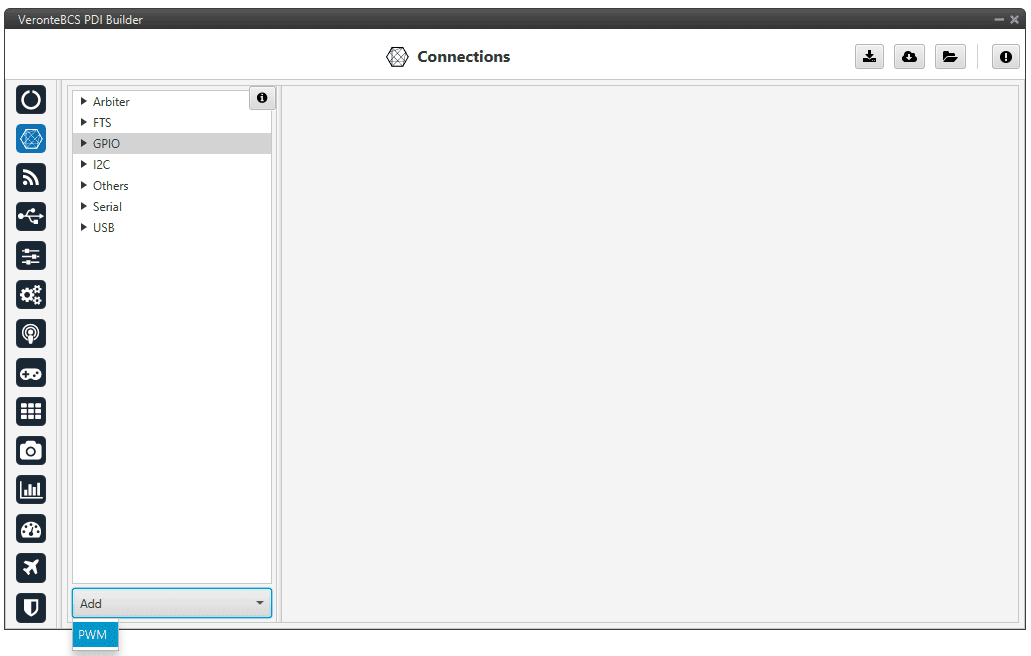
Add PWM¶
Then, select the GPIO pin the user want to change to PWM. As can be seen, pins are interchangeable.
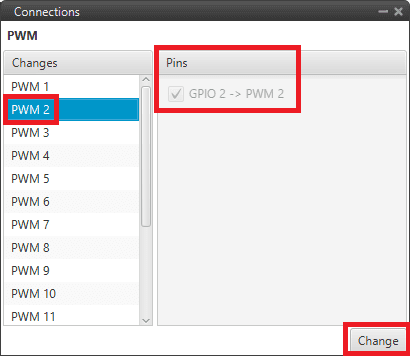
PWM change¶
As shown in the image below, the GPIO 2 output is now missing as it has been changed to a PWM output.
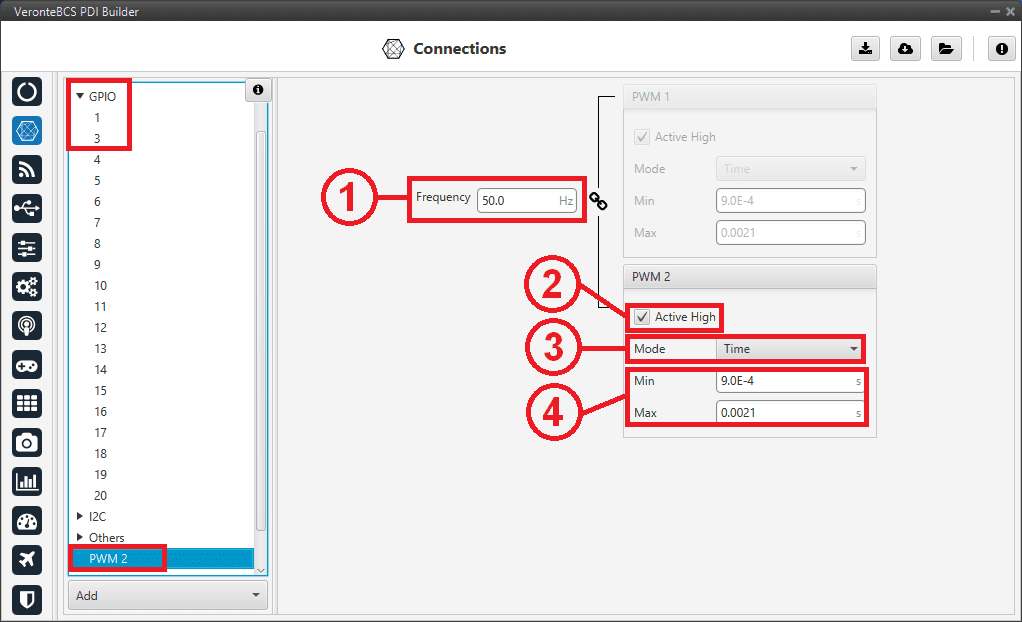
PWM menu¶
In this menu the following parameters can be configured:
Frequency: This option determines the period of the pulses sent by the BCS. The PWM is built in pairs inside the control station, and that is why the frequency is indicated in pairs, i.e when the frequency of PWM 1 is changed, the one of PWM 2 also changes. The following table shows the PMW pairs as configured.
PWM Pairs |
|
|---|---|
PWM 1 |
PWM 2 |
PWM 3 |
PWM 4 |
PWM 5 |
PWM 6 |
PWM 7 |
PWM 8 |
PWM 9 |
PWM 10 |
PWM 11 |
PWM 12 |
PWM 13 |
PWM 14 |
PWM 15 |
PWM 16 |
PWM 17 |
PWM 18 |
PWM 19 |
PWM 20 |
Active High: Enable/disable. Polarity high or low.
Mode: The options available are Time and Duty cycle. The second option is a a different way of indicating the pulse width. Now the value indicated is a percentage which corresponds to the relationship between the pulse width over the total period of the sent signal. So a 100% duty cycle will correspond to a signal with a constant value of 1, while a 0 % duty cycle implies a constant signal with value 0. Between this two extremes, the pulse width can vary as in the examples shown in the following figure.
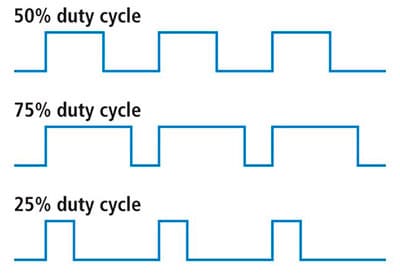
Duty Cycle¶
Min/Max: These parameters are the pulse width values that will make the servo/actuator go to its lowest and highest position. As an example let’s consider the servo of an aircraft elevator, a pulse sent by BCS of 0.9 ms will correspond with the lowest point of the servo range (-30 degrees for example). On the other hand, a pulse of 2.1 ms will make the servo go to its top position (for example 30 degrees).
Summary
A PWM is a signal which consists of a series of pulses having a width determined by a percentage over a range specified by the parameters Min and Max. The GPIO is a signal with a constant value (1,0) or with a single pulse (1,0).
Serial¶
Two serial interfaces are available with BCS, 1 port RS-232 and 1 port RS-485, however more can be added by using a CEX. Each one of the serial interfaces is associated with a set of pins.

Serial menu¶
The following fields can be configured for RS-232 and RS-485:
Baudrate: This specifies how fast data is sent over a serial line.
Length: This defines the number of data bits in each character: 4 to 8.
Stop: Stop bits sent at the end of every character: 1, 1.5, 2.
Parity: Is a method of detecting errors in transmission. When parity is used with a serial port, an extra data bit is sent with each data character, arranged so that the number of 1 bits in each character, including the parity bit. Disabled, odd or even.
Note
All these settings are already specified for a given device, therefore, BCS should match with them in order to be able to communicate.
Serial information table:
Port name |
RS-232 |
RS-422 / RS-485 |
|---|---|---|
Transfer type |
Full duplex |
Full duplex / Half Full duplex |
Maximum distance |
15 meters at 9600 bps |
1200 meters at 9600 bps |
Topology |
Point to point |
Point to point / Multi point |
Max number of devices |
1 |
1-10 in receive mode / 32 |
USB¶
Deprecated.
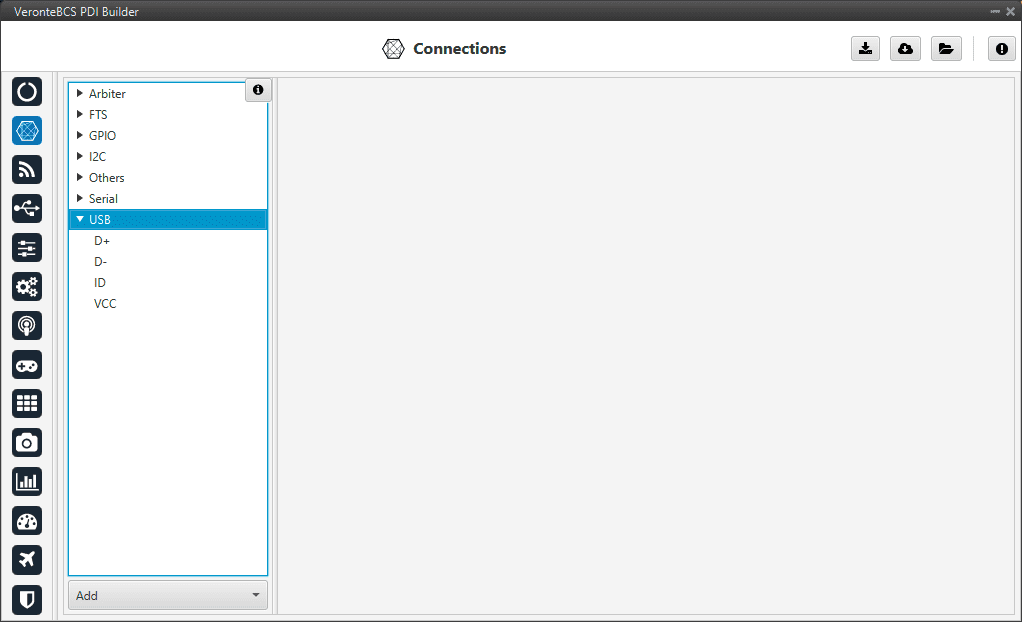
USB menu¶
